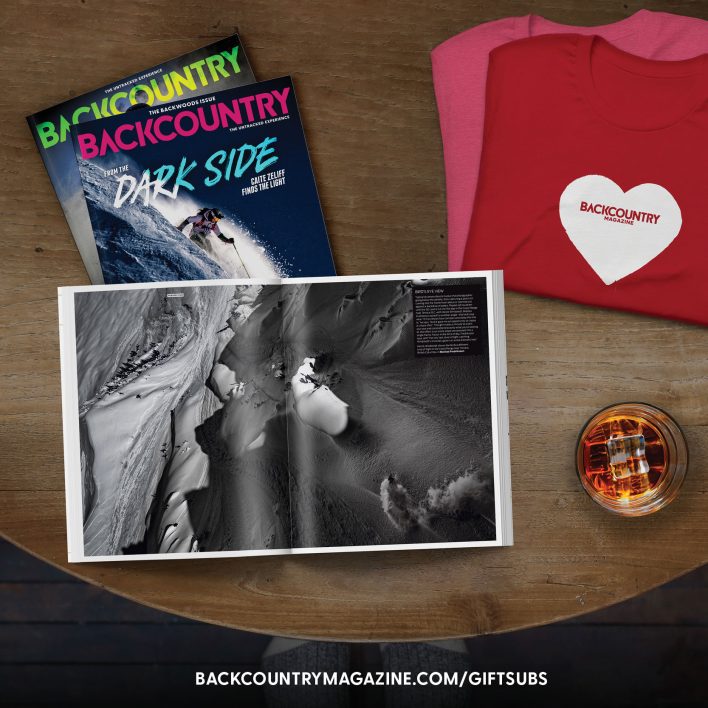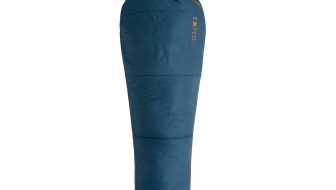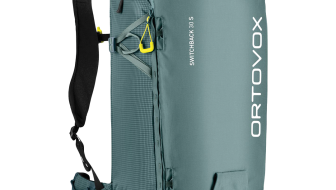It’s a classic morning routine: the alarm goes off, and as it does, you glimpse snow heavily falling outside. Still in bed, you tap open Instagram and start scrolling though. There’s a friend’s dawn patrol mission, someone getting rowdy in chest-deep snow and others tackling big lines.
Given the prevalence of social media in our lives, it can be difficult to filter out the good information from the bad, and it’s important to remember that social media is a small snapshot of a greater picture. While there can be negative consequences from reacting to this medium, there are also positive takeaways. Here is how to use it to your advantage in the backcountry.
![Reich makes her way down a visibly wind-affected slope in Grand Teton National Park. [Photo] Morgan McGlashon](http://backcountrymagazine.com/wp-content/uploads/2016/12/rachel_embed_4.jpg)
Reich makes her way down a visibly wind-affected slope in Grand Teton National Park. [Photo] Morgan McGlashon
The Statistics
It’s no secret that we live in a digital society. News comes to us, and the content we consume is a carefully calculated algorithm of what we want to see. Facebook boasts over 1.79 billion monthly active Facebook users, who generate 4.5 billion likes daily. Instagram users have shared over 40 billion photos to date and share an average of 95 million photos and videos per day.
The implications of social media’s reach extend into the backcountry, too. Studies suggest that social proof heuristic—the tendency to believe that a behavior is correct to the extent that other people are engaged in it—is a central factor in social media and backcountry travel behavior. Avalanche expert and former Director of the Utah Avalanche Center Bruce Tremper writes in his book, Staying Alive in Avalanche Terrain, that he considers this factor to be one of the major causes of avalanche accidents. Amplify that by the amount of content we ingest on a powder day, and obvious red flags are explained away by the social proof that others have done it, and so it must be safe.
Choose Who You Follow
Keeping athletes and media influencers in your feeds certainly helps to get you ramped up, but adding your avalanche forecast center, guide service, local forecasters and ski patrol can paint a more well-rounded picture. The Utah Avalanche Center, American Avalanche Institute, Northwest Avalanche Center and Friends of CAIC all post continually throughout the winter, which offers a more cohesive understanding of what’s really going on and can help counteract negative social cues on your feed. Add a few well-known guides or snow professionals in your area to round out the mix. These professionals are typically out everyday and can provide reliable information on the day’s snow conditions and how the forecast might evolve and impact your backcountry experience.
And if you really feel like geeking out (like me), consider following the Snow and Avalanche Lab at MSU.
![Reich digs pits in the field to supplement her social media clues. [Photo] Rachel Reich](http://backcountrymagazine.com/wp-content/uploads/2016/12/rachel_embed_3.jpg)
Reich digs pits in the field to supplement her social media clues. [Photo] Morgan McGlashon
Reach Out Directly
Chances are, you know at least a few people behind the lens of those jealousy-inducing photos, so why not reach out to them directly and do a little fact finding about their trip? Ask questions: Where did they ski? What were conditions like? Is there anything they think you should be aware of? Were there any red flags as they were departing?
Make sure your sources are reliable, but know that you can find incredibly detailed feedback about conditions and snowpack from taking the time to ask. A quick text or call before solidifying your plan could mean the difference between a bad situation and a fun one. In return, being responsive to others who contact you for info in the future is a great practice as well.
Look for Obvious Clues
Take the time to examine social posts for clues about conditions. Is it a video? When you look at the snow in the photo, decide if anything jumps out at you immediately. For example, are there any signs of cracking in the snow around the skier? Can you see snow transport in the shot or evidence of high winds? Take advantage of the documentation from others to piece together the puzzle yourself.
![There might be a wind crust when… [Photo] Rachel Reich](http://backcountrymagazine.com/wp-content/uploads/2016/12/rachel_embed_2.jpg)
There might be a wind crust when… [Photo] Rachel Reich
Gather Crowdsourced Information
If you have an idea of the line or general area where the media was shot, double check crowdsourcing apps or observations to verify your information. An emerging benefit of social media has led to crowdsourcing apps like MountainHub (formerly Avatech) that assimilate up-to-date and real-time information on what people are witnessing in their area. Before heading out, check to see if there’s any information on conditions in your intended zone. This can help in figuring out what conditions you might encounter, or if there’s any reason to alter the current plan before departing.
Regional Facebook groups or forums (like TGR’s) routinely provide threads of crowdsourced information as well, and sometimes they come complete with photos and colorful commentary. In these instances, keep in mind the credibility of your sources—usually, these aren’t snow professionals commenting, although you can still often learn from these posts.
![Reich gathers beta on early season conditions in the Absaroka Mountains. [Photo] Rachel Reich](http://backcountrymagazine.com/wp-content/uploads/2016/12/rachel_embed_1.jpg)
Gathering beta on early season conditions in the Absaroka Range. [Photo] Rachel Reich
Contribute Yourself
Be a part of the social media solution and contribute to the conversation. If you land an epic shot, share additional information about the snow conditions and pits you dug, or highlight instabilities you noticed in the caption. Add field observations to forums, forecast center observations, MountainHub and Facebook groups when you get home. Sharing such knowledge is caring for friends.
Although social media gets a bad rap for influencing risk taking and questionable behavior, we can still learn from and utilize this medium for positive decision making. Following knowledgeable resources in your social feeds, reaching out directly to friends who have recently posted, looking for clues in relevant content and gathering reliable crowdsourced information are just a few of the ways we can use social media to our advantage in the backcountry. And remember the most important take away of all: things are rarely as perfect as they appear on Facebook, Instagram and Snapchat.
Bottom Line: You can be a proactive part of your backcountry community by utilizing social media in positive and constructive ways. Although nothing takes the place of interacting directly with your local avalanche center and professionals, adding social media as an additional tool to dig for information can be helpful. On top of that, and most importantly, always make sure both you and your partners have the training, appropriate gear and knowledge of how to travel safely before embarking on any excursion.
—
Rachel Reich is a splitboard mountaineer and digital marketing strategist who has found her home in Jackson, Wyo. You can follow her adventures on Instagram at @theracheden.










Related posts:
Travel Wisely: How to safely explore and enjoy the backcountry through a global pandemic
Video: Avalanche Engineers
Mountain Skills: Bruce Tremper on 20 years of education, safety and snow science
Higher Learning: The nuances of how, when, where and why to take a course